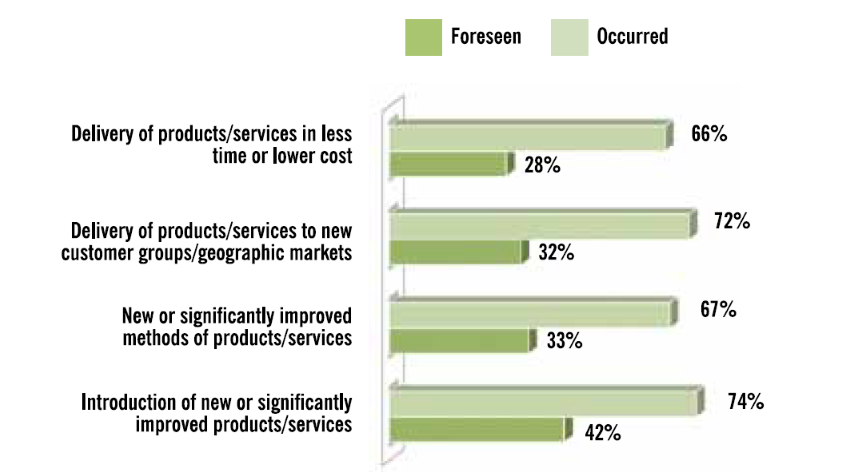SmeSpire - A European Community of SMEs built on Environmental Digital Content and Languages (2012-2014)
This is a summary of the report ‘Cipriano, P., Easton, C., Roglia, E., Vancauwenberghe, G. (2013). Study on the Geo-ICT sector in Europe. SmeSpire’. The full report can be found here. The results of this study were used in the mid-term evaluation of INSPIRE, executed in 2014.
The report ‘Study on the Geo-ICT Sector in Europe’ provided an in-depth analysis and comparison of different Geo-ICT companies in Europe and how they relate to INSPIRE. The study’s primary objectives were: 1) assessing the market potential for Geo-ICT companies in relation to INSPIRE, and 2) characterizing obstacles for Geo-ICT companies to enter this market, with focus on knowledge gaps and training needs
The study was carried out in four stages: desk research using published statistics to describe the Geo-ICT SME sector and its context, an on-line survey to establish an overview of targeted Geo-ICT SMEs in 12 Member States; in-depth interviews to establish the detailed circumstances of the targeted Geo-ICT SMEs and several workshops where results were discussed and validated in a collaborative approach.
Over 300 SMEs were surveyed in 12 countries and 113 face-to-face interviews were held in 2012-2013. An important finding of the study was that , in general, INSPIRE at that time had a relatively low impact on Geo-ICT SMEs, though some benefits had been realised through the introduction of new products/services, ways of working and new customers/markets as well as improved turnover. However, there was a great expectation that INSPIRE would contribute to growth in the future.  ”
”
Part of the reason for the low impact was that there were many barriers to Geo-ICT involvement in INSPIRE. These included budgets, awareness and competency, and the scope of the directive. Moreover, many national infrastructures had yet to implement download and transformation services, and therefore it was still not possible to access the data to build innovative products.
The study revealed a number of interesting observations that illustrated the limitations of INSPIRE with regard to the private sector. The overall picture was that there was a good participation by the private sector in the INSPIRE implementation as contractors and service providers. However, this involvement was limited by the availability of public sector finances. A widespread and significant problem was the restricted access to public sector data either by restrictive licensing or lack of availability or publishing by public sector organisations: this significantly limited the development of value added services by the private sector.
There was a general view that INSPIRE could provide many potential benefits to the private sector. However, unless the fundamental barriers were removed, it was difficult to see how these benefits could be realised. For both private companies and public organisations, INSPIRE’s main benefit was its contribution to raising awareness about geographical information in general, while underlining the need for data sharing through interoperable data and services.
